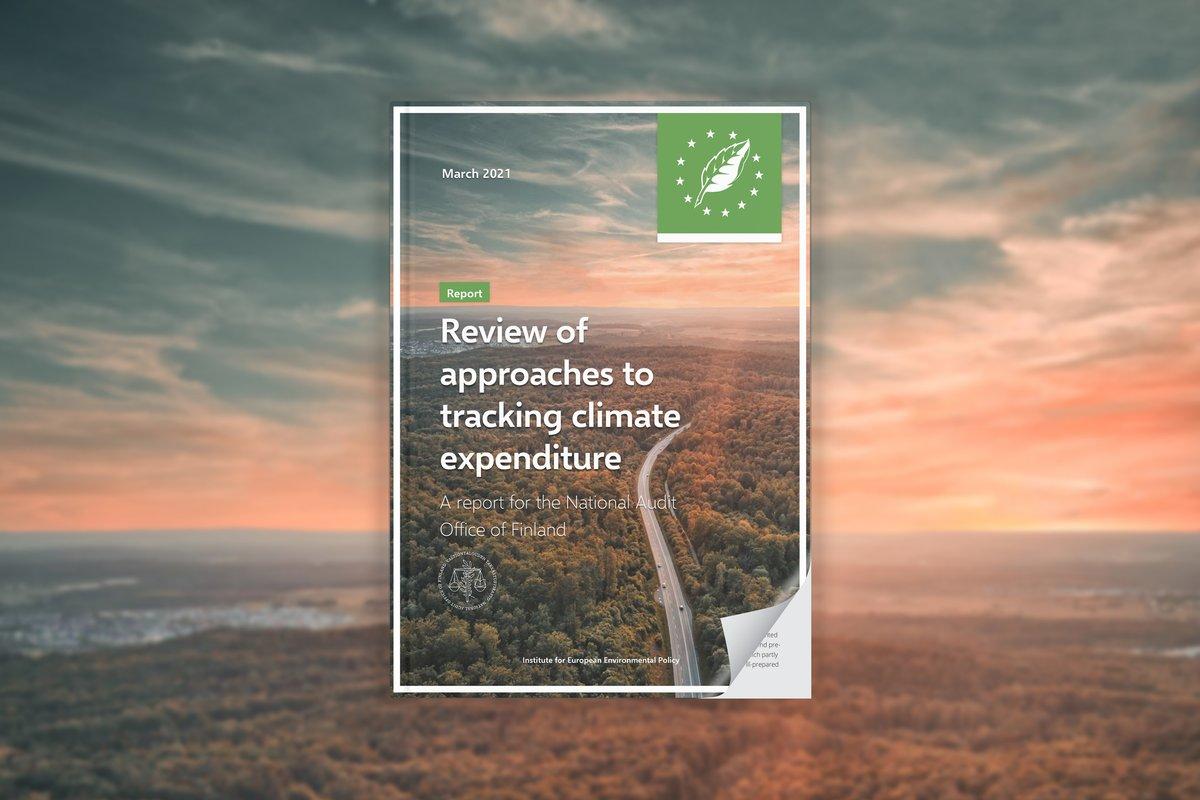AUTHORS: Martin Nesbit – Thorfinn Stainforth – Marianne Kettunen – Eline Blot
The growing awareness among governments of the central role of climate change in public policy has led a number of administrations to develop mechanisms for a better understanding of how the public finance system prioritises climate policy outcomes.
This report provides an analytical review of existing practices to track climate-related expenditure, identifying a range of areas where current tracking systems differ in their practical application and the possible reasons for those differences. It is based on a set of case studies looking at examples of climate tracking mechanisms for public funding, particularly in the EU, but also in other developed economies and some developing economies.
The relevant issues in the EU’s Taxonomy Regulation, which aims to apply a tracking discipline to private investment, are also summarised and reflected. In addition to tracking, the report also provides information on efforts being undertaken to screen expenditure in order to prevent negative impacts on climate policy objectives.
Firstly, the report notes that there is a range of possible reasons for tracking climate expenditure which, in turn, influence the choice of tracking mechanism put in place. These include a desire to create pressure for higher levels of climate expenditure; to demonstrate that existing political or international commitments are being met; to ensure that climate considerations are appropriately mainstreamed; or to improve understanding of the gap between current investment and the level of investment believed to be required.
Secondly, the report identifies different practical approaches to tracking, particularly whether the system is based on the so-called “Rio Markers” or some other classification of climate expenditure. Rio Markers involve identifying whether expenditure is primarily focused on climate outcomes, or whether it addresses them as a principle secondary objective. There are different approaches to the use of Rio Markers, including whether they are assessed on the basis of the stated objective of expenditure, or on the basis of its impacts in practice. The Rio Markers system aims to provide a relatively simple approach which nevertheless recognises that, because climate policy is linked to the full range of economic activity, a binary categorisation of “Climate relevant” and “Not climate-relevant” is difficult to achieve.
Other systems, particularly those which look at climate relevance alongside a range of other environmental outcomes, use a binary categorisation. While this can give valuable information on whether climate and other sustainability issues have been mainstreamed in individual areas of expenditure, it is not as effective in providing estimates of overall expenditure on climate.
Finally, attention should also be given to improving synergies between mechanisms for tracking public expenditure and mechanisms for tracking private expenditure, especially in the context of the implementation of the EU Taxonomy Regulation. While there are different purposes to public expenditure tracking, and the regulation of private sector investments which can be labelled as “sustainable”, there is enough similarity in their objectives to create the potential for mutually beneficial learning.
Policy recommendations
Based on our review, the following recommendations for improving the integration of climate policy into public expenditure can be identified:
- The need for clarity on the purpose of a tracking system, and transparency in how it is used;
- The importance of a clear link between climate expenditure, and the climate outcomes delivered by that expenditure;
- The need to distinguish between expenditure on climate mitigation, and expenditure on climate adaptation.
- The need to identify expenditure that has a negative impact on climate policy, and, where possible, to take action to avoid that negative impact. The total of residual negative expenditure should be reported separately, rather than netted off a total figure for climate expenditure.


